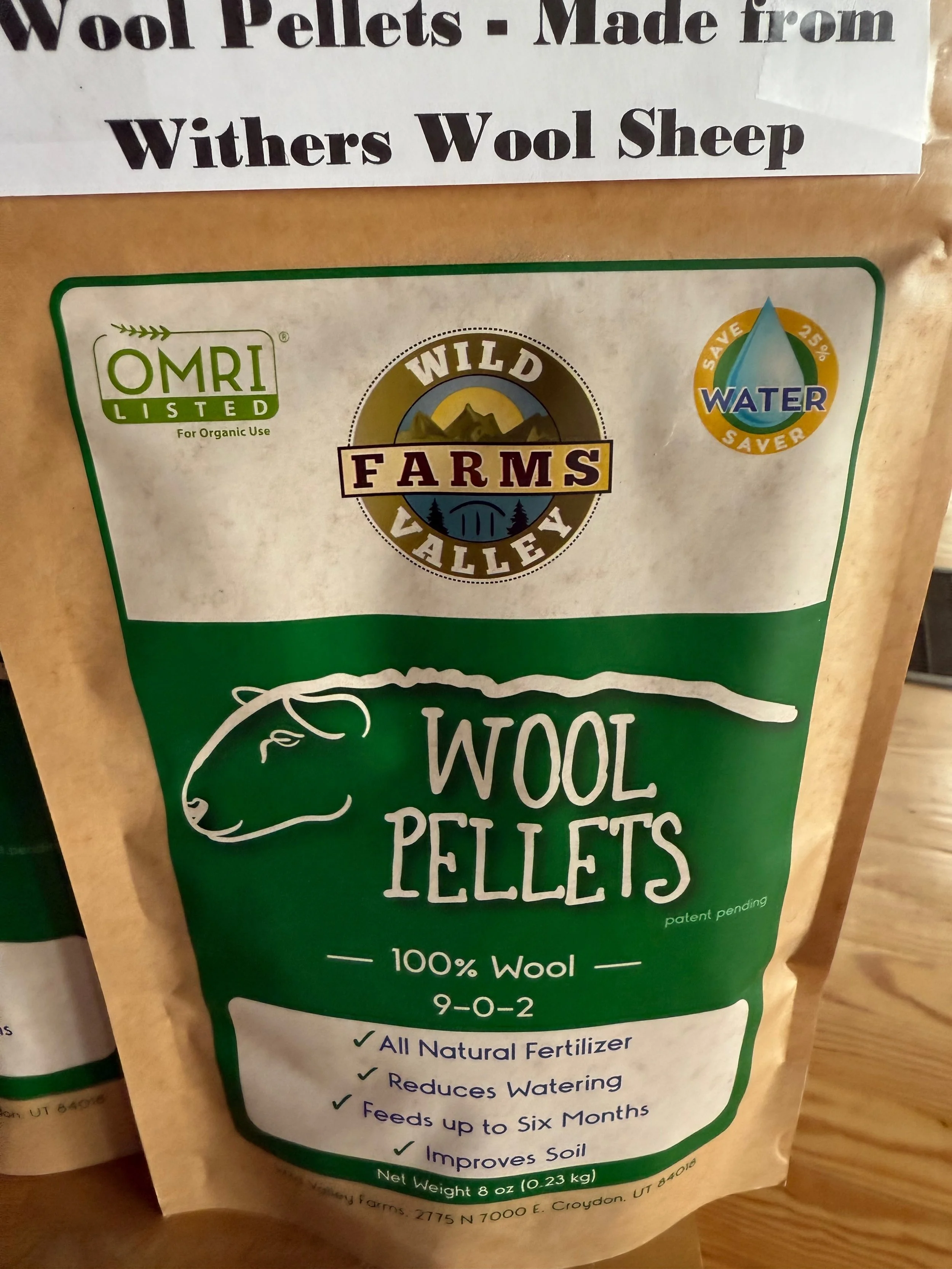I just got some wool pellets that are now available in the shop so I thought I would discuss how you can use them (and wool in general) in a garden. There are actually many uses for wool (besides using it to make yarn or felt with); alternate uses of wool (beside using it in the garden) include the following:
Insulation: Wool's coarse fibers are good at trapping air pockets, making it a good insulator.
Fire resistance: Wool is resistant to fire and mixed into garments for fire protection.
Oil spills: Wool can absorb up to 10 times its weight in oil, making it useful for cleaning up spills.
Wool bricks: Wool fibers can be added to clay to make eco-friendly bricks.
Filters: Wool can be used to make filters.
Wool has been used in the soil since at least the 1900s. Recently machines have been developed that can make pellets from the raw wool (and other fiber). The pellets can be utilized more easily (than regular wool fiber) and have many uses in gardening, including:
Repelling slugs and snails
Wool pellets are a non-toxic alternative to slug pellets. When wet, they create a barrier that irritates slugs and snails, forcing them away.
Holding water
Wool pellets can hold up to 200% of their weight in water, which helps keep plants hydrated during dry spells. They also wick away excess water, preventing overwatering.
Improving soil health
Wool pellets are a natural mulch that slowly breaks down over time, releasing nutrients into the soil. They also improve soil aeration.
Suppressing weeds
Wool pellets create a barrier between the soil and air, blocking sunlight and preventing weed seeds from germinating.
Regulating soil temperature
Wool pellets act as a natural insulator, helping to regulate soil temperature and protect plants from extreme weather.
Slow-release fertilizer
Wool pellets are a natural, organic fertilizer that feeds plants while reducing water consumption. They are rich in nitrogen and potassium, which are vital nutrients for gardens.
Safe for wildlife
Wool pellets are safe for wildlife in your garden and they break down naturally over time
At Withers Wool we have used raw wool for mulch for many years - in our garden and around fruit trees. The wool sheared from the sheep legs and belly is not suitable to be carded (to be spun as yarn) or used for felting. As an experiment, I sent some wool to Wild Valley Farms to be made into pellets and just received them back.
Each bag of wool pellets is 8 ounces. The pellets will hold 20 times their weight in water and maintain oxygen space for the roots. Using them you can reduce your watering up to 25%. The advice is to mix 1/2 cup of wool pellets to 1 gallon of soil. You can also sprinkle the pellets around existing plants and push or work into the soil directly. The pellets are guaranteed to have 9% total nitrogen and 2% soluble potash. Generally the pellets will feed your soil about 6 months before they fully decompose (the exact time depends of course on the nature of the soil).
Bag of wool pellets
Picture of the pellets


